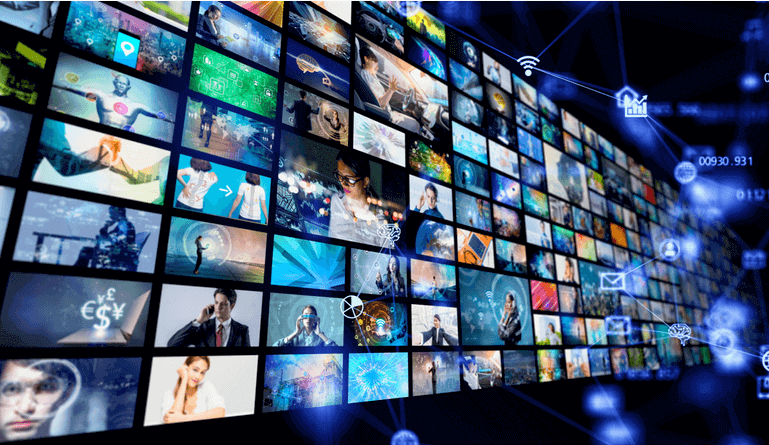By David Kashak
If you work in the media industry and follow the news lately, you have undoubtedly read many stories about NFTs. You have probably come away with several questions:
- What on earth is going on here?
- Should my company be doing something with NFTs?
- Did I miss out on getting rich?
- Should I quit my job and become a digital artist?
Well, we cannot help you with the last few questions. But we do think that media companies and advertisers should start thinking right away about how they can play in the exploding world of digital assets because the possibilities seem endless. Even the most enthusiastic fans and leaders in the NFT space do not fully grasp where all of this will go.
As you are probably aware by now, NFTs, or Non Fungible Tokens, are exclusively owned original digital files. Just like a famous piece of art, anybody can Google an image of Jack Dorsey’s first tweet or a popular meme, or a notable NBA playoff moment. With NFTs, a single person can own the original digital copy, verified by blockchain, demonstrating its provenance (it cannot be copied or faked, proof of ownership).
That is interesting, you might say. But there has always been a collectibles market in the physical world – people owning original Mickey Mantle baseball cards or a shirt that Jimmy Hendrix wore to Woodstock. That is by nature a limited space, but how does it apply to publishing?
After all, most publishers do not have exclusive sports highlight rights or a library of famous movie clips. We are still trying to figure out how to get people to pay for subscriptions.
We understand your skepticism.
But from what we have observed, the NFT phenomenon has applications beyond the speculative collectible market.
Already, we have seen some fun experimentation in the marketing world. Pringles sold an ad NFT for $2. Denny’s is selling several of its original tweets. Taco Bell even sold a GIF – of a Taco.
Yes, some of these are a bit gimmicky. But if you think about the media business, the most successful networks or publications have built a brand that forges a deep connection with their audience. There is so much opportunity there.
For example, many news organizations and magazines have a long history of publishing memorable headlines, groundbreaking interviews, iconic photos, etc., which could create NFT-like digital exclusivity. We have already seen Time turn some of its classic magazine covers into NFTs.
How about The Chicago Tribune cashing in with an NFT of the famous “Dewey Defeats Truman” headline (spoiler alert, Dewey did not defeat Truman)? The Washington Post could NFT Watergate covers. The New York Post: “Headless Body in a Topless Bar.” The list goes on.
There is so much room to test here. News publishers, in particular, have unique access to public figures and celebrities that could create custom-branded digital ‘moments’ for select pools of readers/viewers. Imagine what a Harry, Meghan and Oprah snapshot NFT would be worth?
There has always been a desire among fans to gain special access – think sports, entertainment, fashion. We are already seeing Playboy’s stock price jump in large part due to its NSFW-but-very-NFT-friendly library. Indeed, some publications are almost inherently ‘insider’ in a way that makes you feel like you are in a club.
Plus, one of the oldest tricks in the marketing book is to engineer exclusivity in the fashion industry. You can easily imagine web creators developing ways to productize their output for fans in a limited-release fashion – not unlike Complex Media’s exclusive rollouts for sneakers, songs and even hot sauce.
It is not out of the question that media companies could even tap prominent digital artists to co-create exclusive digital images or items. Think back a few decades ago to how Target distinguished itself in the big box retail world by teaming up with artists and designers to create original, only-at-Target lines and products. NFTs could enable publications to pull on these emotional threads.
We already see this in gaming, where exclusive ‘skins’ in Fortnite become instantly coveted. Why couldn’t TV producers or streaming platforms bake such similar short-term digital items into their experiences?
The influencer world also seems ripe for this sort of thing if your media company works with top TikTok or YouTube talent. From gamers to musicians to makeup artists, there seem to be endless possibilities to create moments that can be cryptofixed.
If it still sounds outside of your universe, think about the company Dapper Labs, which powers the NFT brand Top Shots. CEO Roham Gharegozlou spoke recently on the Recode Media podcast about his company’s desire to create an open ecosystem, along with its own IP.
In March, Dapper had already raised a whopping $305 million in funding at a $2.6 billion valuation. By April, that valuation was up to an astonishing $7.5 billion. So they seem onto something- or more accurately, making something out of almost nothing.
That is because, before getting into business with the NBA, Dapper introduced the first NFT craze – CryptoKitties – which Gharegozlou said was worth $30 million on its own. While it is great to work with premium leagues like the NBA, “we can take bigger risks on our IP,” he said.
If they can make a market out of digital cats, imagine what your brand can do.
***
David Kashak is CEO of Connatix.





